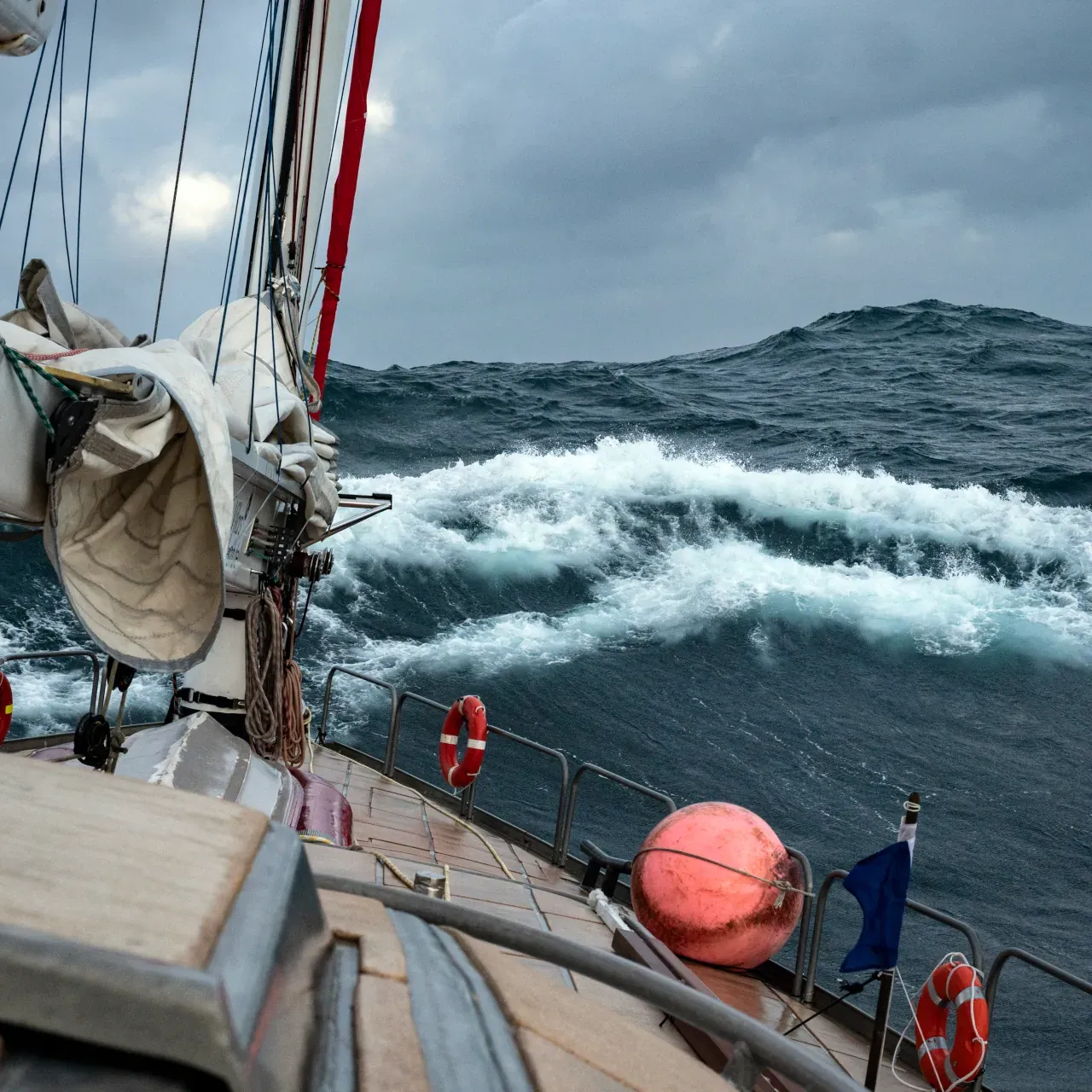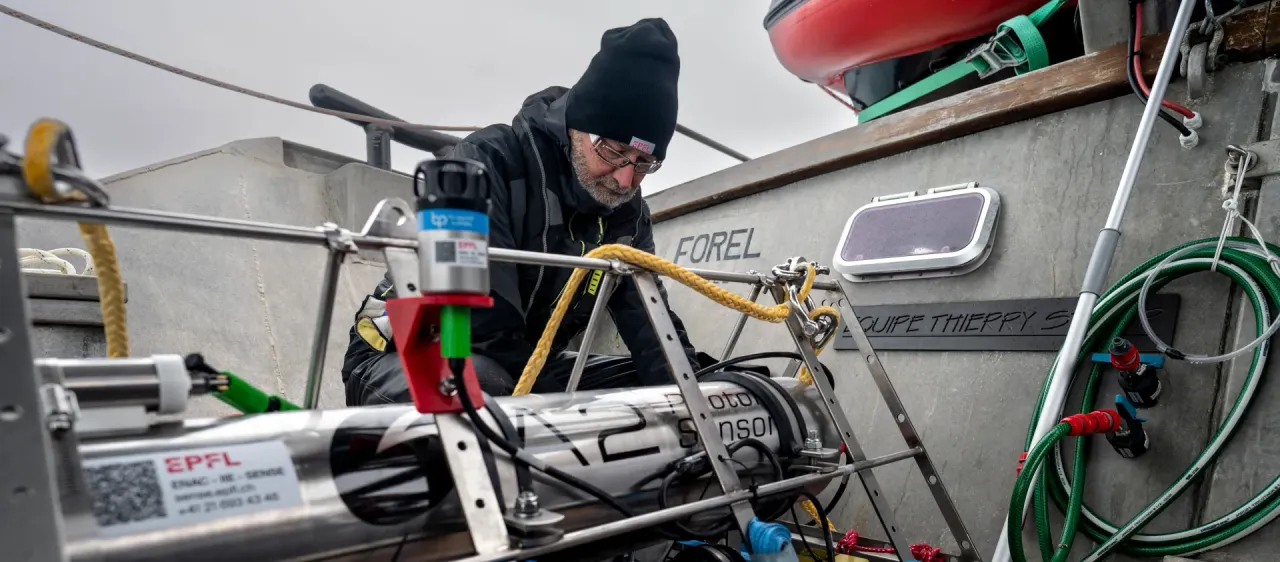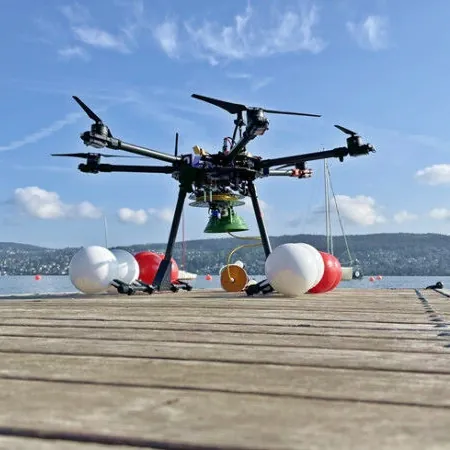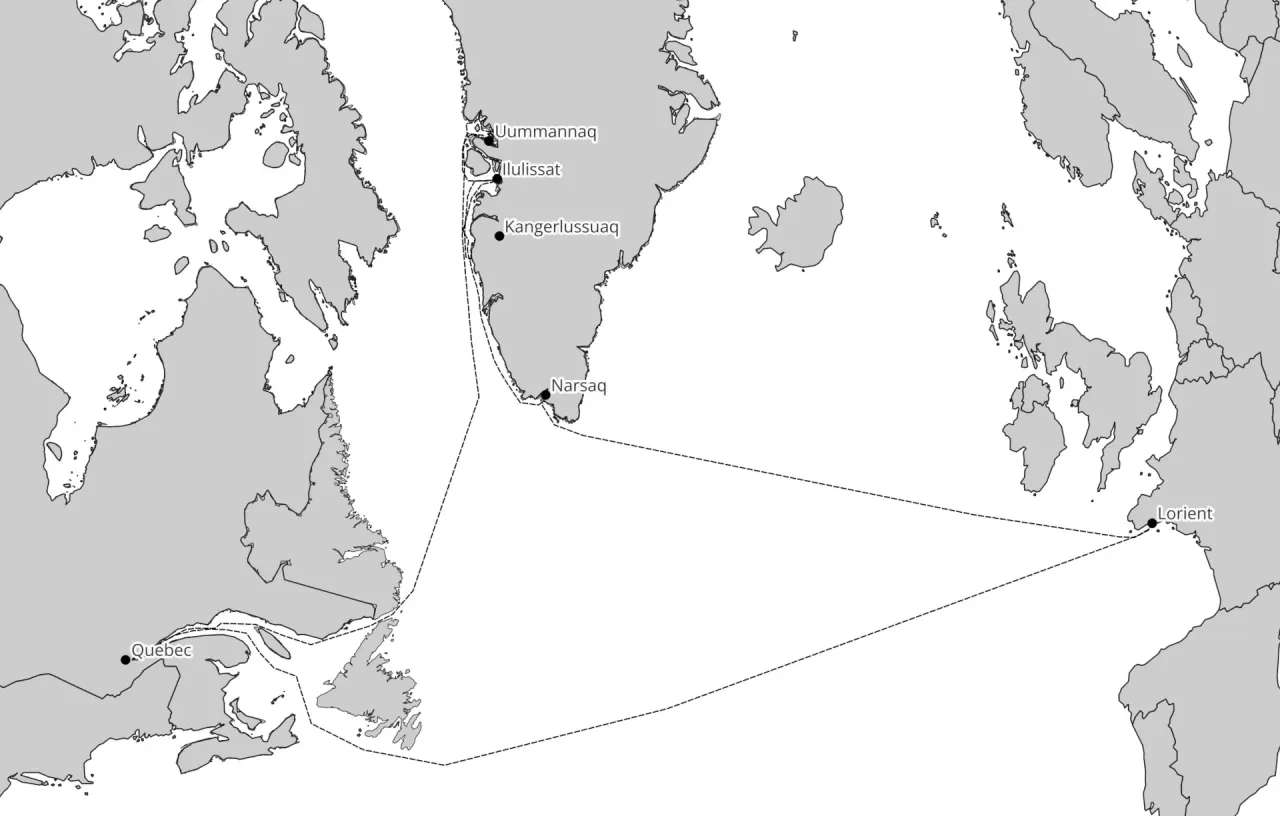
LEG 1 - Atlantic Crossing, Lorient–Quebec (May 19 – June 7, 2025)
FOREL will depart from the pontoons of the Cité de la Voile Éric Tabarly on the morning of May 19 to cross the Atlantic towards Quebec, Canada. The vessel will be docked at the Bassin Louise in the Port of Quebec for one week. This stopover will allow for the loading of scientific equipment from Canadian research teams, as well as the promotion of the platform. Water samples will also be collected during the crossing for the analysis of both anthropogenic and natural particles.
LEG 2 - Saguenay Fjord / Estuary and Gulf of Saint Lawrence (June 14 - July 3, 2025)
FOREL will make a stop in Quebec (Canada) to support Canadian scientists, notably from Université Laval and the Université du Québec à Chicoutimi, in their study of the Saguenay Fjord ecosystem.
This fjord is part of the Saguenay–St. Lawrence Marine Park, a protected marine area covering more than 1,200 km².
Scientifically, this leg will focus on four main research topics:
- Characterization and movement of water masses in the Saguenay Fjord (Prof. Philippe Archambault, Université Laval
- Characterization of micro- and nanoparticles of anthropogenic and natural origin (Prof. Julien Gigault, Université Laval)
- Mapping of the Saguenay Fjord walls (Prof. Vincent Lecours, UQAC)
- Gradient of mesozooplankton biodiversity at high latitudes, from coast to open sea (Dr. Meike Vogt, ETHZ)
LEG 3 – Ilulissat / Karrat Fjord / Uummannaq / Kangerlussuaq (July 9 - August 4, 2025)
FOREL will then continue its journey toward Disko Bay in northwestern Greenland. A new team of international researchers will come aboard to conduct studies in the Uummannaq region.
The vessel will serve as a scientific platform for about twenty days in this area, enabling field research focused on the following four topics:
- Impact of glacier melt on Greenland fjord ecosystems: assessing effects on zooplankton, polar cod larvae, and carbon cycles (Prof. Caroline Bouchard, ULaval)
- Emissions and fate of methane from subglacial waters (Prof. Jérôme Chappellaz, EPFL)
- Characterization of natural and anthropogenic micro- and nanoparticles (Prof. Julien Gigault, ULaval)
- Biogeogenic fluxes in Greenland fjords: impacts on marine ecosystems and nutrient cycles (Prof. Samuel Jaccard, UNIL)

LEG 4 - Kangerlussuaq / Narsaq (August 8 - September 4, 2025)
To conclude its 2025 mission, FOREL will once again support the scientists of the GreenFjord project in southern Greenland, continuing its commitment to studying Greenlandic fjords and the impacts of climate change on these ecosystems.
These studies in Greenland will focus on two types of fjords: those influenced by tidewater glaciers and those shaped by land-terminating glaciers.
- land -ocean-atmosphere interactions and biodiversity in relation to climate (Prof. Julia Schmale, EPFL; Prof. Samuel Jaccard, UNIL; Prof. Loïc Pellissier, ETHZ; Dr. Lucas Paoli, EPFL; Dr. Anna Carratala, EPFL)
- Validation studies for new technologies and sensors (Prof. Julia Schmale, EPFL; Prof. Mirko Kovac, EPFL; Dr. Lucas Paoli, EPFL)
- Social science research on local perceptions of changing fjords (Prof. Laine Chanteloup, UNIL)
 Image: Empa
Image: Empa
In addition, scientific teams will collect water and plankton samples during the transit from Tadoussac (Canada) to Ilulissat (Greenland). Water samples for the analysis of anthropogenic and natural particles will also be collected during Leg 1 (Lorient – Quebec) and on the return journey from Narsaq to Lorient (end of Leg 4).

FOREL is expected to return by mid-late September to its home port, La Cité de La Voile Éric Tabarly in Lorient.




